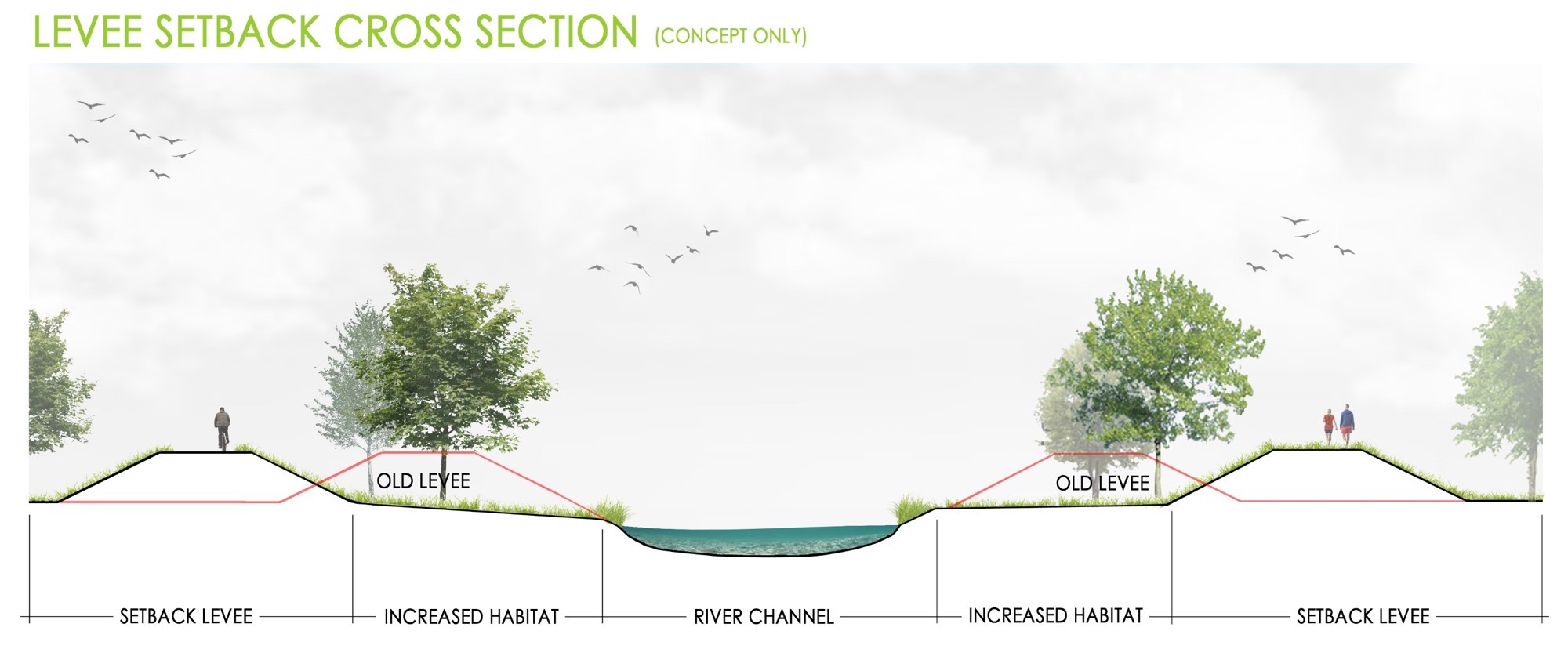Idaho State University MILES researchers play key role in City of Pocatello River Vision Study
March 7, 2016

POCATELLO – By providing input and informational tools Idaho State University researchers are assisting the citizens of Pocatello to create a new vision and plans for the Portneuf River running through the city.
Now confined largely to a concrete channel as it flows through town, the Portneuf River may one day be freer flowing, bordered by walkways, parks or other improvements envisioned by planners.
ISU researchers active in the National Science Foundation’s Managing Idaho’s Landscapes for Ecosystem Services (MILES) project have lent their expertise and knowledge to the City of Pocatello’s Portneuf River Vision Study, a research project funded by U.S. Army Corp of Engineers.
The goal of the river vision project is to create a comprehensive plan for the Portneuf River from the Portneuf 'Gap' on the south edge of the city, downstream to the Fort Hall Indian Reservation boundary at Siphon Road.
“The City of Pocatello wants to restore the river and improve the quality of life for Pocatello and still meet flood control needs,” said Hannah Sanger, City of Pocatello science and environment division manager and lead on the city’s Portneuf River Vision Study.
Initial planning and research on the project was completed from June to October last year, working group meetings have been held, public outreach and meetings were held in January and an initial draft of the project’s vision will be completed in late April. The vision project hopes to have a final project vision completed this summer to present to the Pocatello City Council in September.
“I don’t think we’d be close to where we are at today without MILES’ support,” Sanger said. “The additional knowledge and resources we’ve received has been really critical, not only for the work we’ve done, but for thinking through the process and determining where we want to end up.”
The goals of MILES – a five-year statewide study in its third year being conducted by the state’s public institutions – and the Portneuf River Vision study go hand in hand. MILES was created to advance the understanding of feedbacks between social and ecological systems and ecosystem services in mid-sized cities in the face of climate change and urban growth. Information from the work on MILES being done at ISU fit seamlessly into the Portneuf River Vision Study.
“The ISU MILES researchers have been and continue to be integral players and have provided mapping resources and an online mapping tool that people could use when they went online to comment on the Portneuf River Vision Study,” Sanger said. “The GIS (Geographic Information System) maps show the land ownership, where trails are and where the river used to be. Users can click on it and make comments and the public and everyone using the site can see it.”
Donna Delparte, ISU research assistant professor in geosciences, assisted with mapping portion of the project.
“We have been delighted to work with the City to use GIS to help stakeholders input their comments on to interactive maps and to create visualizations that represent potential future scenarios for river development,” Delparte said. “This provides our students with the opportunity to contribute to the real world decision-making process.”
ISU MILES researchers shared results of their surveys on the uses of the Portneuf River and provided some input on the City of Pocatello’s Portneuf River Vision Study survey that received more than 600 responses. ISU also provided the information on for the River Vision website for a variety of topics including recreation, flood history, and the features “Portneuf in 3-D” and “Portneuf River 1959 and Today.”
In addition, ISU MILES grant leads Donna Lybecker, professor of political science, and Colden Baxter, associate professor of biological sciences, are on the 26-member River Vision working group, comprised of members representing a wide variety of community organizations and interests.
“One of the goals of MILES is to connect people to ecosystem services,” Lybecker said. “One of the big ways to do this for us was to connect the Portneuf River to the community.”
Another of the big goals of the MILES project is to translate science findings into policy change, to generate science that is actionable and can be used by communities to form policies.
“And here we are, even before the MILES grant has ended, with an initial plan for the river and, if all goes well, by this time next year there will be an adopted long-term plan for the Portneuf River,” Baxter said. “We will have assisted with catalyzing this project, and this an example of what it is we are supposed to be doing; one example of what we hope will be many more of this type of application of our science to our local communities.”
The river vision project has benefitted the MILES study as well.
“As scientists involved in this project we have a dual role,” Baxter said, “providing information and resources on the one hand, and responding to the needs of the city and the identified interests and directions the public are interested in. Some of the science we are doing is inspired by the interactions we’ve had with the process.”
For more information on ISU’s involvement with MILES, visit http://miles.isu.edu/.
For more information on the Portneuf River Vision Study, visit http://river.pocatello.us/.
